The Art of the Itinerary!
People typically ask about our itinerary when we mention we’re taking another international trip. We usually get asked the same two questions: “Did you plan all that yourselves?” and “How do you know where to go and what to do?” The answer to the first question is easy. Yes, we’ve planned all our trips. Technically, all except one, and that single experience is precisely why we’ve planned every trip since. In this post, we share what goes into planning an international travel itinerary.
Why We Plan Our Own Travel Itineraries
The one time we used a travel agency was our worst travel experience ever! Without diverging into a separate blog post, I’ll hit the highlights… The agency forgot to give us our printed airline tickets. We’d assumed our tickets would be printed at the airport, but we didn’t realize the error until check-in. It was too late. We missed our flight, arrived two days late in Spain for a pre-booked five-city itinerary, and missed all our initial transfers, reservations, and train connections.
To make matters worse, the airline lost our luggage, and we were without it for the first nine days of our ten-day honeymoon! It was a disaster! Granted, it made for some hilarious stories in hindsight. But, we will never use a travel agency again.
Fortunately, the experience didn’t curb our love of travel. Since our honeymoon, we’ve been to 20+ countries, and through planning those trips, we’ve developed a process that can be broken down into ten general steps.
Essential Rule for Planning Your Own Travel Itinerary
In our experience, the first and most important rule for planning an international travel itinerary, that’s epic and affordable, is to plan as far in advance as possible. The best airline ticket and accommodation deals are most straightforward to find months before departure. We typically book these things six to nine months out, so that is where our process begins…
Step 1. Pick a Travel Destination
Aka ‘finding affordable airline tickets.’ This step is almost always Craig’s. He regularly browses Google Flights and airline sites, looking for cheap destinations. Sometimes, it’s the deal that determines the destination. There aren’t a lot of places we won’t go to if the price is right.
More commonly, when we have a destination in mind, he searches for flights within the region of the destination. Sometimes, sacrificing an exact destination can be more affordable and worth the additional driving. For example, if we’re hoping to fly to Oktoberfest, we search for tickets to Europe, not just Germany. If flying into Berlin is significantly cheaper than Munich, maybe it’s worth the drive.
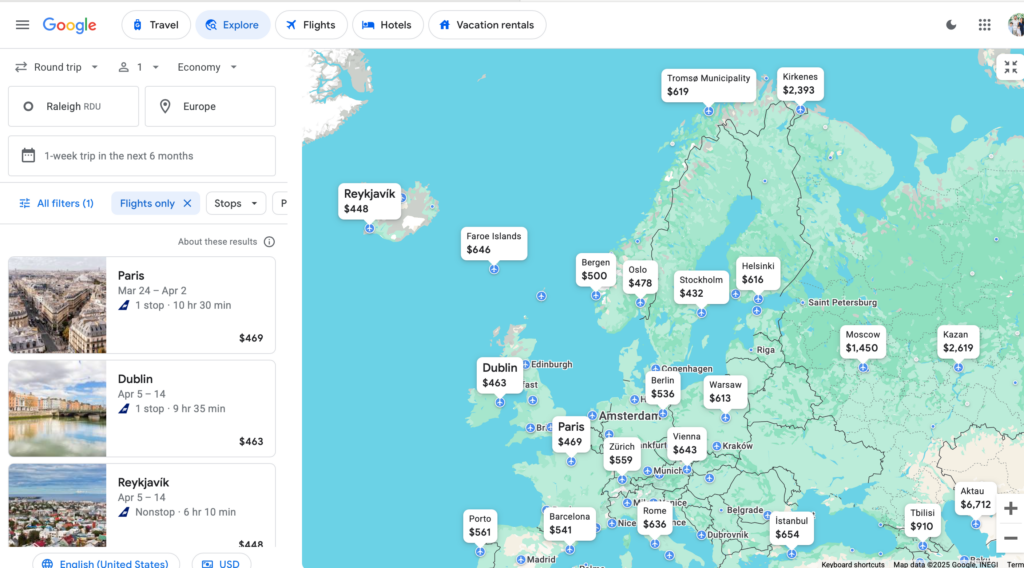
Expand the Destination Search
Another cost saving strategy for planning an international travel itinerary is expanding the search to include larger airports within driving distance from home. Our local airport is limited so we often drive several hours to larger cities with more airlines and cheaper fares. We’ll even driven from NC to FL for an overseas deal.
PRO TIP: Coordinate ticket deals with airline miles and rewards points. Craig diligently tracks and organizes ours. We often cancel credit cards and apply for new ones to earn upfront incentives, used correctly, the savings add up.
Once we have our destination and departure city, we sit down with our calendars – work, school, etc., and decide which time of the year works best for this destination and how long we want to be gone.

2. Decide the Duration of Travel
Duration is most heavily influenced by the kids’ school calendar. Like most families, our kids have summer break, a few days off around Thanksgiving, two weeks around Christmas, and a week for Spring Break. We usually add a day or two to if it means a better ticket bargain.
PRO TIP: This time of year is considered “high season” for travel, meaning there is higher demand, increased prices, and less availability. For this reason, planning well in advance is essential, as most airlines post schedules approximately eight months ahead.
Consider the Travel Commute
The longer the commute, the longer the trip duration. The commute is the worst part. It’s exhausting and can consume days of the journey. Deciding how many days we want to explore our destination and considering commute times help determine the duration.
The number of things to do and see once also factors into the duration of the trip. If there are a lot of boxes to check, we’ll need more time. If we’re planning to visit multiple cities or countries, we’ll divide the trip up. Generally, we prefer at least two ‘base locations’ if we’re traveling for more than a week.
3. Reco the Route of the Itinerary
With the general duration decided, we start reconnaissance for our travel route. The route is crucial to planning any itinerary. Whether walking through a city or driving cross-country, always know where you’re going before you get there. It’s a huge timesaver!
It’s time to start looking at maps. This is when planning an international travel itinerary starts to take shape. This is usually where I take over. Generally, I sit down with my computer and look at neighboring countries, major cities, landmarks, distance to the coast (we love to end vacations on the beach), and transportation options.
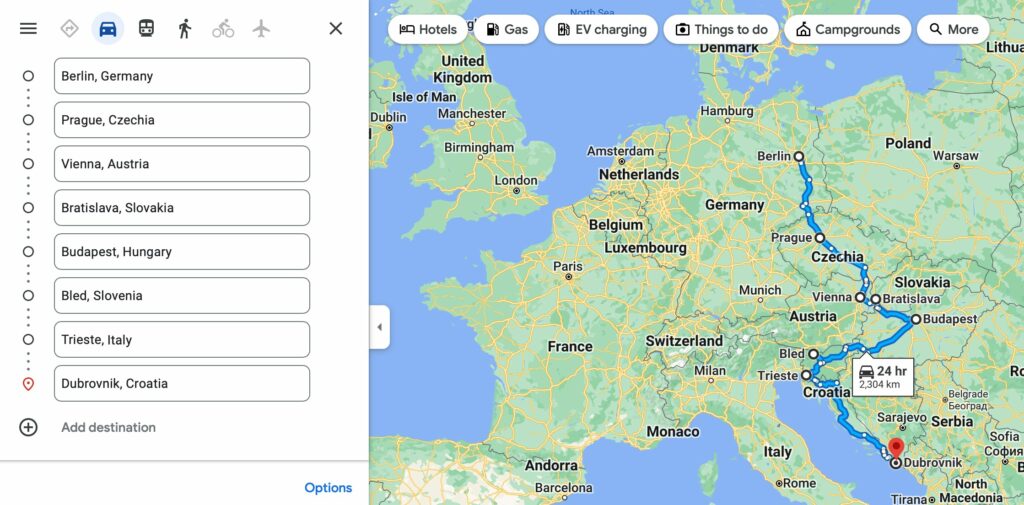
Once I have a few pins on the map, I create a route in Google Maps. The route will shift as planning continues, but at this point, it’s a reasonable estimate of the total distance and drive time. This helps finalize the days needed for the journey.
When we travel internationally, we always rent a car because having control of our schedule is a top priority. However, I also consider localized transportation like subways and rail service. Which are excellent options for breaking up driving, especially for day trips.
For trips that cover a lot of ground, I break the route into drive times between destinations. Craig does the driving when we travel internationally and prefers to keep drives under four hours per day, with two days between drives. Those parameters aren’t set in stone, but they decide where our ‘base locations’ should be.
4. Research Rental Car Options
Over the years, we’ve learned that the cost of renting a vehicle varies substantially worldwide. Determining that cost early is best; it can make or break an itinerary. In the case of one multi-country trip, it was cheaper to lease a vehicle from Europcar than renting one! Most rental companies charge exorbitant fees for returning a car to a country other than its origin. So, if your itinerary isn’t round-trip, this is a considerable expense.
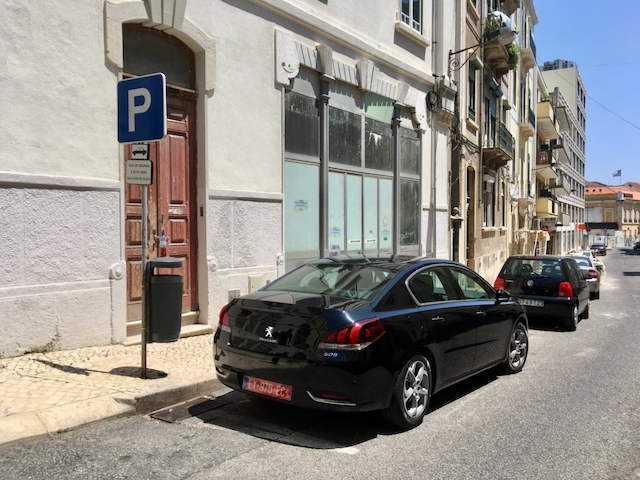
PRO TIP: Deal directly with rental companies in your destination country. You can’t always trust third-party travel sites like Expedia to have accurate pricing. We’ve learned the hard way. It can easily double your rental expense.
5. Break Down Route
The next step in planning an international travel itinerary is to break down the trip. Considering our “four hour max / two day min” driving parameters, I look at options. Scanning Google Maps along our route and looking for interesting stops. Sometimes, a location stands out immediately as a famous city, national park, or natural wonder. Other times, I’ve got to dig, especially if we’re trying to stay off the beaten path.
I also consider accommodations, ensuring a destination isn’t too limited or expensive. When considering a location on the map, I’ll flip over to Airbnb and see what’s available in the area. Airbnbs often cluster on their search map, which helps narrow in on areas.
The Google Maps ‘search nearby’ function is helpful for a cursory glance at restaurants, groceries, and “things to do” in those areas. These details come into play later in the planning process, but I like to be sure there are options.
I keep notes using a separate document as I work through this process. I copy and paste short descriptions and hyperlinks for interesting places and activities I come across. I divide them by our tentative ‘base locations.’
6. Hash Out the Calendar
After researching things to do in and around our respective ‘base locations’, I estimate the time we’ll need at each place. Things move around as I get into the minutia of planning, but I need broad strokes first. I print out a blank calendar and use a pencil to fill things in. I use a pencil because there are always changes. For example, during my research, I may have noted that a particular national park is least crowded on weekdays, that visitors should arrive at opening, and plan to spend at least 5 hours. That helps me know where that visit should land on the calendar. I start with our “must-see” items and use them as a framework.
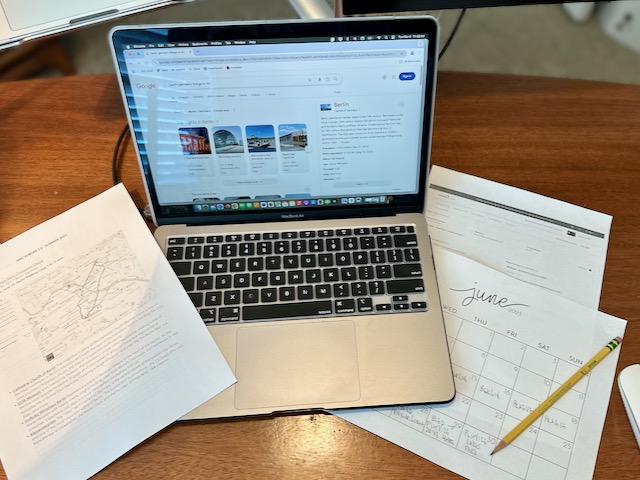
It’s easiest to start with the beginning and end of the trip, because these dates, locations, and times are already determined by our flights. I also factor in commute times to and from the airports and if airport accommodations are necessary based on flight times. This creates the preliminary structure of the itinerary.
7. Book Travel Accommodations
At this point, when planning an international travel itinerary, I have a general idea of where our accommodations should be. Airbnbs are our preference, so I begin there. Based on our route and tentative ‘base locations’, I use the search map to focus on specific areas. As mentioned, Airbnbs tend to cluster, and those areas usually indicate restaurants, grocery options, and things to do are nearby.

Zooming in closer, I look for options central to the sites we want to visit while in that location. I put our must-see sites into Google Maps and gauge their proximity. If we’re in a rural area and will use our Airbnb as a jumping-off point to visit various destinations, I select Google Maps automobile settings to consider drive times. If we’re in an urban area and will be walking between destinations, I select the Google Maps pedestrian setting and consider walking distances. Next, I create a “wishlist” of options based on availability for the dates hashed out on the calendar.
Narrowing down a “wishlist” of accommodations with numerous options can be difficult, so I filter for things like the number of bedrooms, baths, parking, a laundry, and A/C.
8. Hammer out the Details
This is my favorite step of planning an international travel itinerary! I love digging into the details! Using the framework on the calendar, I start with the first few days of the trip. The most important consideration is the commute. How long was the flight? What time will we arrive? How do I expect we’ll be feeling? Will we need a car immediately?
These things significantly impact planning the first few days. For example, if we’re coming off an overnight flight, the first day will likely be a wash, and we may need an extra day to get our bearings. If the flight is short and we will arrive mid-day, we may hit the ground running.
With the rest of the itinerary, I work from both ends and plan toward the middle. This helps establish a manageable travel pace and balance of activities. I search for things to do around our “must-see” destinations, this time looking deeper into the particulars.
Planning Itinerary Specifics
Using my notes document, I research the specifics of each activity, including hours of operation, best days and times, age restrictions, and prices. I use various online sources, avoiding the most popular travel sites like Expedia, Trip Advisor, Lonely Planet, etc. Those sites generally promote standard, touristy travel with sponsored content and ads. I prefer to read independent blogs and search for less typical sources like Culture Trip, Atlas Obscura, and Crazy Tourist.
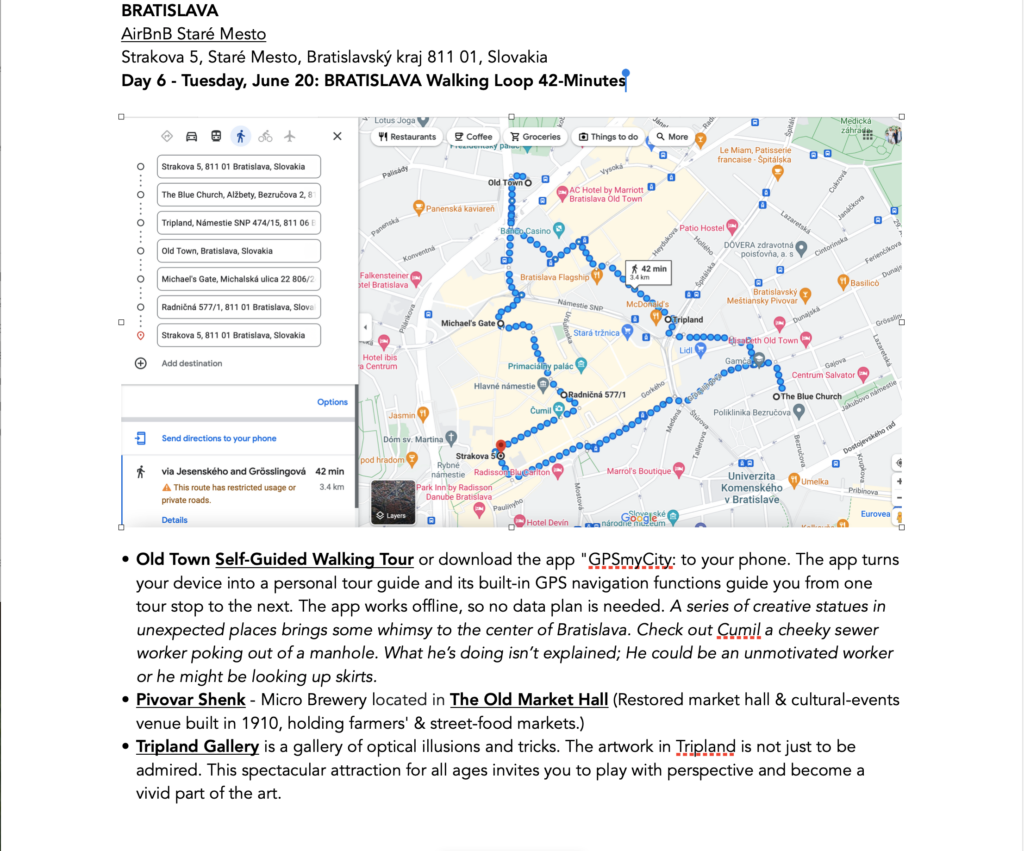
I read travel books in conjunction with online sources to broaden travel suggestions and opinions. Travel books often include practical maps and preplanned itineraries. Having an actual book while traveling is valuable if plans fall through. Having a book makes discovering alternative plans much more straightforward.
For each calendar day, I attempt to construct the most efficient route to everything planned. Starting and ending with our Airbnb, I enter individual stops into Google Maps and reorder them to create a circular route when possible. This gives me an idea of the total walking (or driving) distance and duration. If we stay in an area for multiple days, it also helps me group destinations based on their proximity.
Understand Who You’re Traveling With
Knowing your people is the most crucial aspect of planning an international travel itinerary. By that, I mean their interests, temperaments, fitness, etc. Personally, that means considering our teenage boys. I know that they will need a reprieve if we’re two weeks into a trip and have just spent three days trekking through a crowded city. They can visit only so many historic buildings before they’re bored, so it’s imperative to include things explicitly geared to them.
Sometimes, I include alternative destinations or activities for a particular day because I’m unsure how we’ll feel—a ‘choose your own adventure’ opportunity. For example, during our three-week vacation across Eastern Europe, while we were in Slovakia, I included an option to take a train from Bratislava to Vienna and spend the day, or stay in Bratislava and visit Wake Lake Waterpark. I’ll let you guess which one our boys picked.



9. Book International Travel Insurance
Purchasing travel insurance is an often overlooked but essential part of planning an international travel itinerary. Once the airline tickets, accommodations, and rental car are booked and the itinerary is laid out, judging the cost of a trip is easy, and all you need to know to estimate your coverage amount.
Travel insurance provides reimbursement for eventualities you might encounter, including trip cancellation, airline failures, medical expenses, luggage loss, etc. We assume these won’t happen because we’ve planned so meticulously, but unfortunately, they’ve happened more than once. We’ve learned the hard way. And, while adding another purchase to a long list of expenses can be hard to swallow, it is essential.
Numerous comparison sites, like Travel Defenders and Forbes, make finding coverage easy and affordable. Don’t skip this step!
10. Wait Patiently to Put Planning into Action
This might be the most challenging step in the process! Planning an international travel itinerary, that’s epic and affordable, isn’t impossible. But, waiting months to take it can be!
You might also like these related posts:


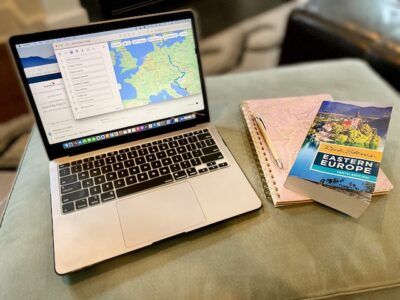
 The Best of Nicaragua
The Best of Nicaragua